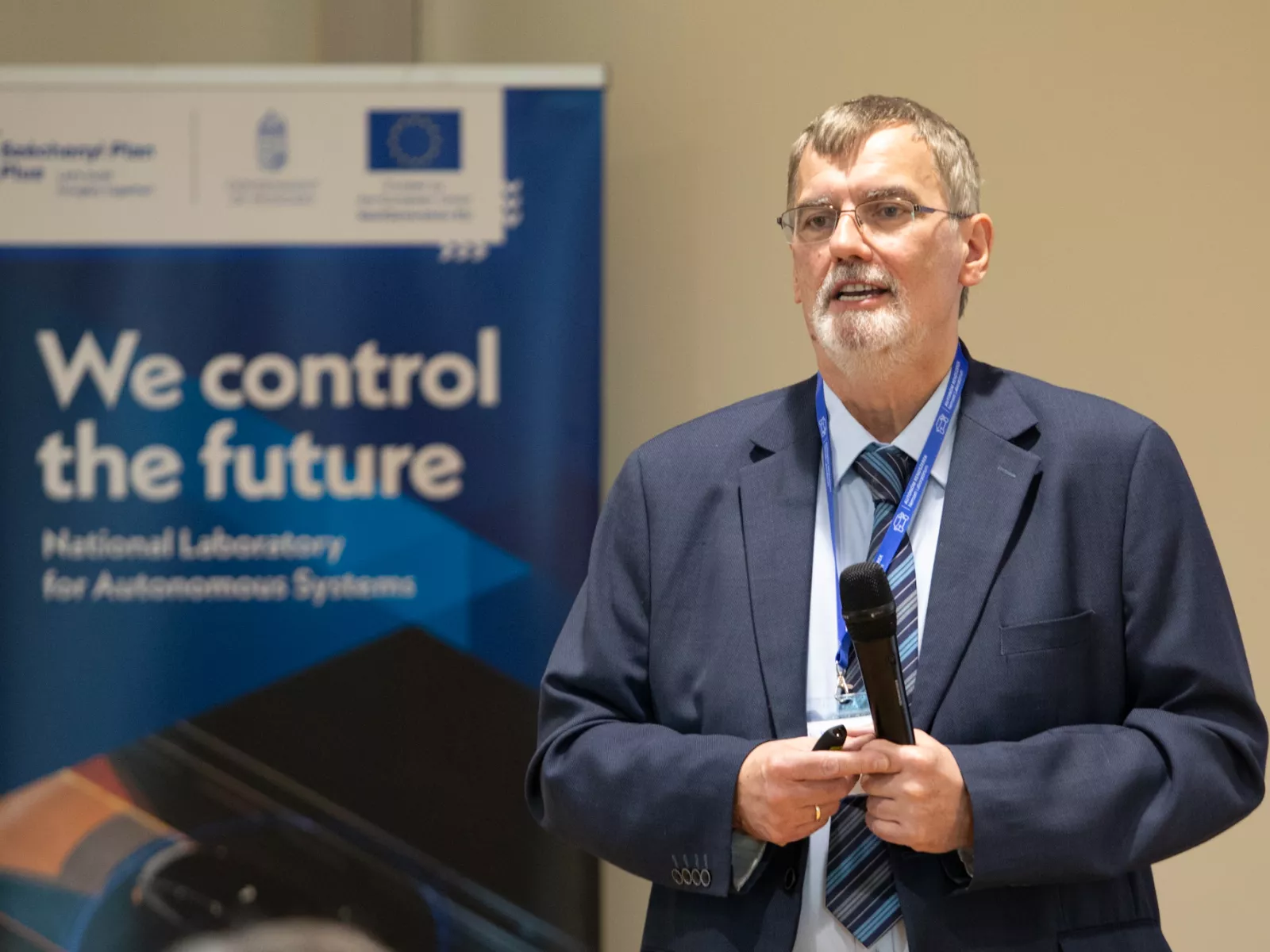
The Autonomous Systems National Laboratory (ARNL) held its annual research and development demonstration day entitled "Innovation in Motion" at the ZalaZONE Industrial Park in Zalaegerszeg, Hungary on 26 May 2025. The event featured presentations of the latest developments by the HUN-REN Institute for Computer Science and Control, the Budapest University of Technology and Economics, and Széchenyi István University, all members of the ARNL consortium. The demonstration day highlighted that domestic research into autonomous systems is based on strong foundations, both from a scientific and practical perspective, and offers real answers to the transport and industrial challenges of the future.
The event was opened by Prof. Dr. László Palkovics, Government Commissioner for Artificial Intelligence, who emphasized in his speech: "The success of the Autonomous Systems National Laboratory is undeniable, and today's demonstration day clearly proves this. Our primary goal in establishing the consortium was – and continues to be – for Hungary to play a pioneering role in the development of autonomous vehicles in the region. Vehicles are the most complex devices in our environment: we are talking about a field that combines almost every discipline, which is why a common platform is key on this path."
During the day, visitors were able to experience first-hand how control theory meets artificial intelligence. Among the indoor demonstrations, the presentation of self-driving racing robots stood out, where the vehicles planned the ideal route in real time and were able to perform overtaking maneuvers independently. This technology is already a useful part of university talent management, but it could also serve as the basis for future transportation systems.
The LiDAR-based vehicle control system presented as part of the outdoor program demonstrated how a vehicle can accurately determine its own position even when GPS signals are weak or inaccurate, such as in tunnels, dense urban environments, or forested areas. The technology combines data from various sensors (e.g., laser scanners and AI-supported software) to enable the vehicle to navigate reliably and make decisions even in challenging conditions.
Another impressive feature was the 3D vehicle reconstruction process, which can recognize and spatially model vehicles based on images from one or more cameras. What makes this method unique is that it does not require a preliminary database or training phase, making it quickly adaptable to new environments. The solution could be particularly useful in closed parking garages or urban traffic junctions, where the movement and position of vehicles can be automatically tracked based on camera images – this solution could even form the basis for self-driving parking systems in the future.
"The systems and algorithms presented are the result of several years of coordinated work by Hungarian researchers and engineers. The examples we saw – from vehicle models reconstructed from camera images to LiDAR-based positioning and real-time decision-making by self-driving vehicles – clearly demonstrated that the research and development work being carried out in Hungarian laboratories is clearly at the forefront of international developments in a number of areas," said Prof. Dr. Péter Gáspár, head of ARNL. "ARNL's goal is to further develop these technologies and make them available in a form that will contribute to the long-term realization of safe, intelligent, and sustainable mobility," added Prof. Gáspár.
Photos taken at the event can be viewed at this link.